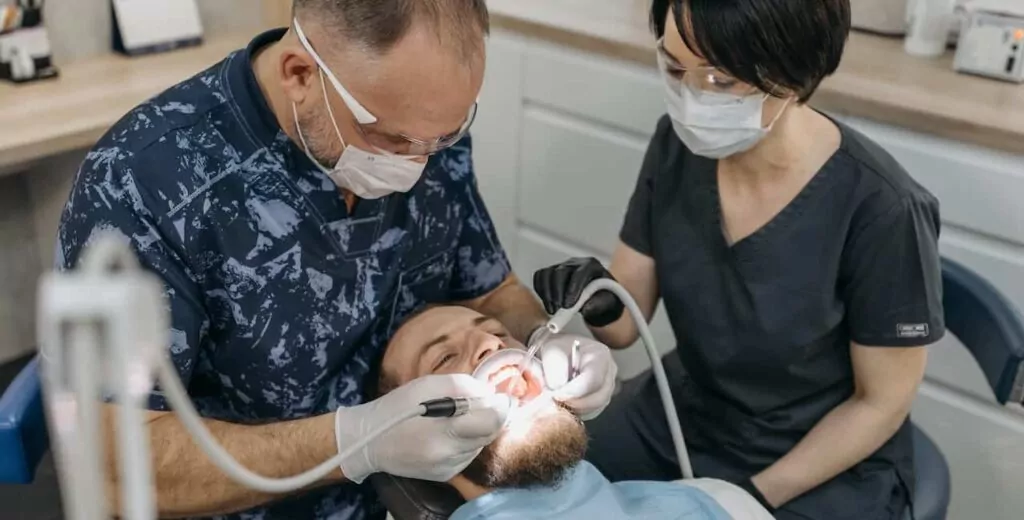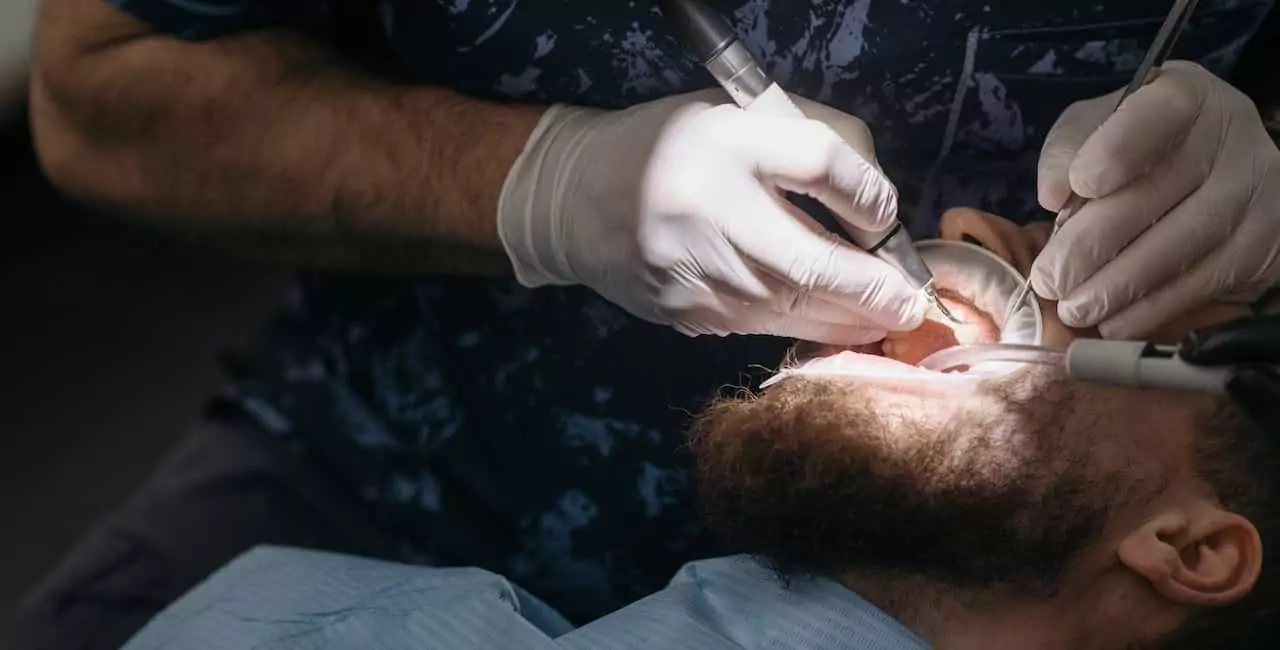A bright smile is never out of fashion. The young and new generation is more worried about their smile and teeth. They always want healthy, strong, much whiter, and brighter teeth to look more charming. Sometimes, it is seen that in a rush to have beautiful teeth, people, especially teenagers and young adults, are captivated by cheaper and unregulated products which claim their integrity. To avoid any harmful after-effects of low-priced and unpleasant whitening products, always have a professional consultation from a well-qualified, trained, and experienced dentist who will help you with your smile makeover.
In simple terms, tooth whitening is lightening the natural color of your teeth. The extrinsic stains, the ones found on the tooth’s outer layers like tea or coffee stains, tobacco stains, and others, are removed with a professional cleaning and polishing of the teeth with abrasives of different thicknesses. This will aid in removing hard stains from the tooth layers and prevent teeth sensitivity to hot and cold things.
The intrinsic stains cannot be removed using simple oral prophylactic measures and abrasives. Instead, they need chemical compounds like hydrogen peroxide or sodium hypochlorite that bond with the chromogens and dissolve them, leaving behind much whiter teeth. The procedures for intrinsic and extrinsic stains are done in a dental office by a qualified and experienced dental professional.
What are the different types of tooth-whitening systems?
According to the American Academy of Cosmetic Dentistry, some multiple ways and systems that can help you lighten the color of your teeth. Some of them are described below:
Toothpaste
The whitening toothpaste available in the market consists of abrasives and detergents in higher amounts to remove tough stains from the tooth’s surface. Though they don’t contain bleaching agents such as sodium hypochlorite, they consist of hydrogen peroxide in low concentrations. Using this whitening toothpaste, you can get about one to two shades of lighter teeth.
Whitening strips and gels
The whitening strips are adapted over the outer surface of teeth, and hydrogen peroxide is delivered in thin layers slowly over the tooth layers. The strips are placed according to the instructions on the packet, with the most recommended of applying the strips for about 30 minutes twice daily for a fortnight.
Whitening gels also function similarly, with the only difference in applying gel on the tooth’s surface with a small brush.
Whitening Rinses
The rinses consist of hydrogen peroxide through which oxygen is released that bonds with the chromogens to remove them, leaving behind whiter and brighter teeth.
Tray-Based Tooth Whiteners
The whitening system consists of carbamide peroxide in a tray inserted in the mouth over the teeth and left for 2-4 hrs a day or overnight as per the requirement and provided instructions.
In-Office bleaching
This method is done in dental clinics by a qualified dental professional. The chromogens are exposed to heat or intense blue light or hit by a laser system to enhance the chemical reaction and remove the stains. Many effective results are visualized at the end of this professional teeth whitening procedure.
Is the tooth whitening procedure excellent or bad for your teeth?
The abrasives used in teeth whitening do not negatively impact the layers of teeth. The coatings of teeth, such as enamel, remain intact, and no harm is seen. Sometimes, patients complain of tooth sensitivity after teeth whitening procedures, which are only temporary. Hence, the teeth whitening procedure, if used optimally under expert guidance, does not harm your teeth; instead will give you a few shades lighter teeth.

What is the procedure’s time, and how long will the teeth remain white?
The professional teeth whitening procedure continues for about 30 minutes with two intermittent applications of 15 minutes each. The procedure is broken into two equal intervals to achieve maximum tooth whitening without irritation in the gums.
Does teeth whitening procedure work on dentures?
No. Teeth whitening systems are developed to lighten the natural teeth. Hence, the prosthesis, including artificial teeth, dentures, dental fillings, or veneers, does not get lightened with this procedure; instead needs to be replaced with a new one.
What is the difference between tooth bleaching, stain-lifting, and whitening?
All three terms are mainly used interchangeably, but technically, there is little difference between all three. In stain-lifting, only the stains on the teeth are removed using oral prophylactic procedures using different abrasives. The whitening procedures leave behind a few shades lighter teeth than before, while dental bleaching uses sodium hypochlorite to act on deeper layers of teeth and lead to much whiter and brighter teeth.
Does the treatment hurt?
Usually, there is no pain or discomfort seen with the whitening procedures. But, sometimes, patients may complain of tooth sensitivity during or after the treatment or mild irritation to the gums. But, this is all a temporary phase and will be relieved soon.
Points to Ponder
People go for tooth whitening procedures and achieve more beautiful smiles than before. These are safe procedures with only some temporary discomfort and irritation.
We hope the information provided in the blog adds extra essence to your knowledge. Do let us know in the comment section below.




